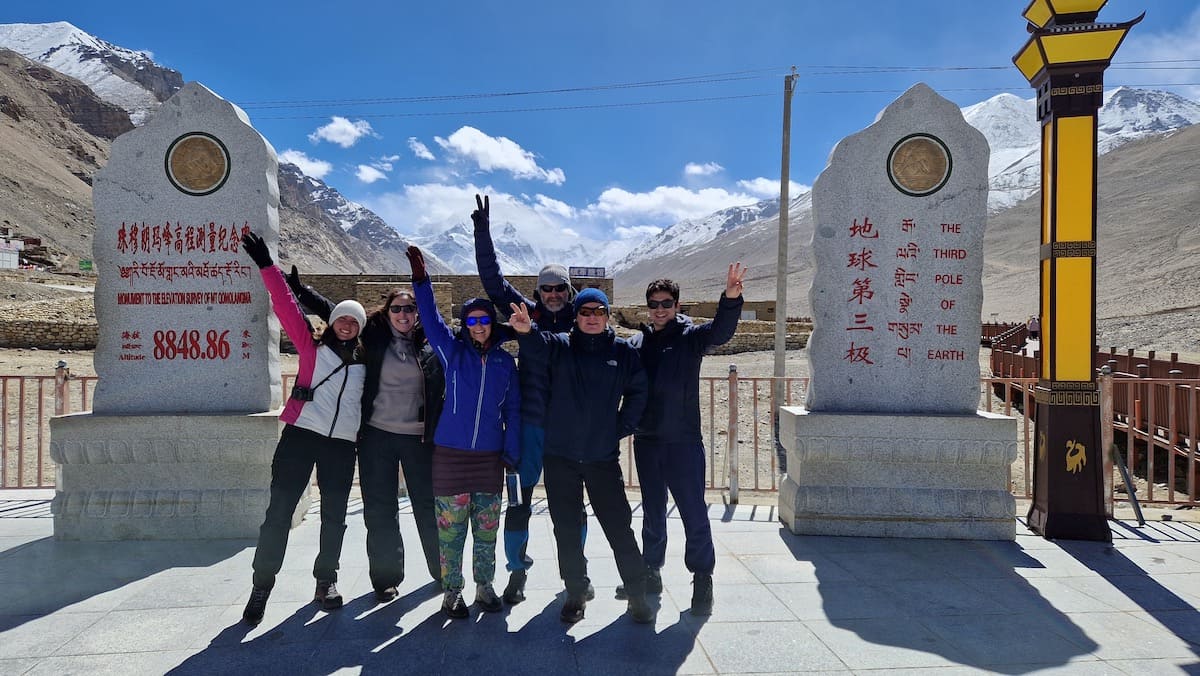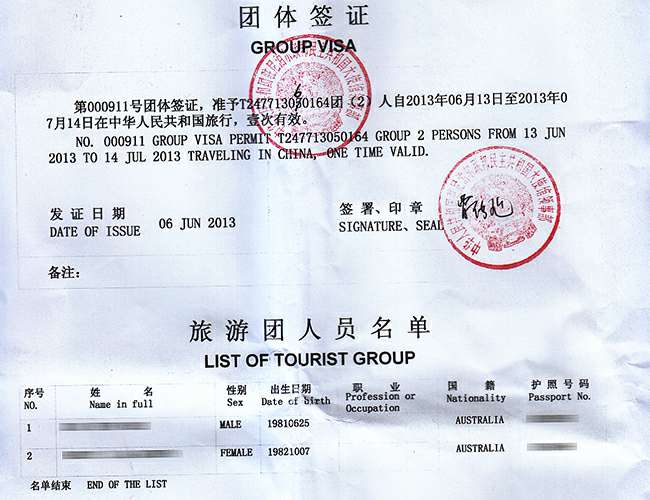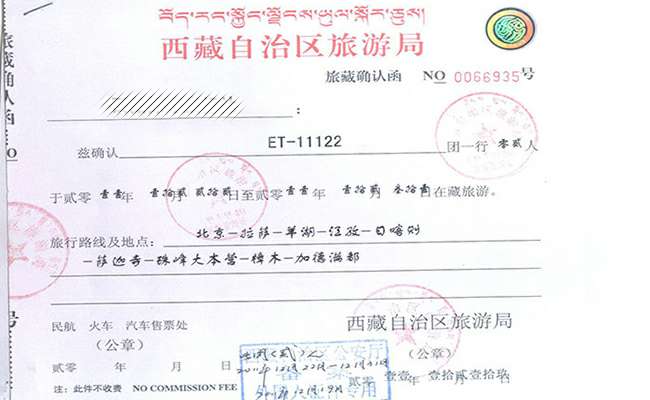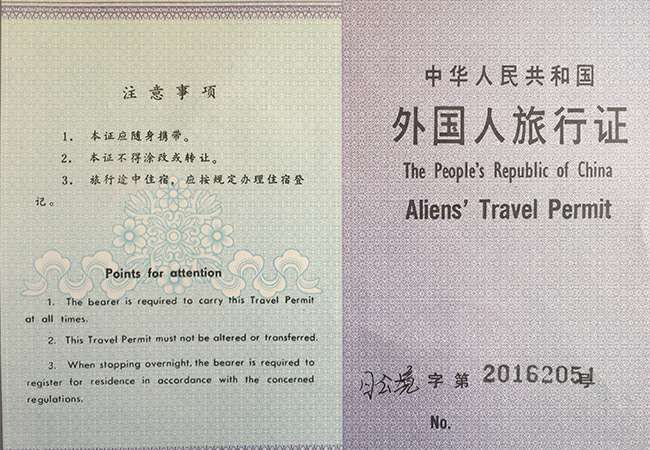+86-15889090408
[email protected]

Tibet, often referred to as the Roof of the World, is a dream destination for travelers seeking spiritual depth, unparalleled natural beauty, and a unique cultural experience. However, visiting Tibet is not as straightforward as traveling to other regions, primarily due to its political sensitivity and remote location. To visit Tibet, foreign travelers need to obtain several permits in addition to the standard Chinese visa. Understanding these permits and the application process is key to ensuring a smooth trip.
This guide provides a comprehensive look at the permits required for traveling to Tibet, detailing who needs them, how to apply, and other essential tips.

The Tibetan Autonomous Region (TAR) is governed under strict regulations due to its cultural and political sensitivity. Tibet is a restricted area for international visitors. Permits are required for foreign travelers to ensure that their visit complies with local laws and that their movements are monitored for safety reasons.
There are several types of permits you may need, depending on where you plan to go and what activities you want to do while in Tibet. The complexity of the permit process means travelers must rely on registered tour agencies to secure their permits.
Foreigners planning to visit Tibet will need one or more of the following permits:
The Tibet Travel Permit (TTP) is the main document you need to enter Tibet. Without this, it is impossible to even board a flight or train to Lhasa, Tibet’s capital.
• Who Needs It? All foreign nationals, including citizens from Hong Kong, Macau, and Taiwan.
• What It Covers: The TTP allows access to most areas in Lhasa, Shigatse, Gyantse, and other major cities in the TAR.
• How to Apply: You cannot apply for the TTP independently. A certified Tibet travel agency must apply for it on your behalf. To do so, they will need a scanned copy of your passport and Chinese visa.
• When to Apply: It’s advisable to begin the process at least 15 days before your intended travel date.
• Processing Time: It typically takes 8 to 10 days to obtain the TTP.
• Where It’s Checked: You will need the original TTP to board any plane or train bound for Tibet, and it will be checked at checkpoints upon entering the region.
Once inside Tibet, if you wish to travel outside of Lhasa to restricted areas, you will need an Aliens’ Travel Permit (ATP).
• Who Needs It? Foreigners traveling outside of Lhasa to areas like Mount Everest Base Camp, Sakya Monastery, and some regions in Shigatse.
• What It Covers: Access to regions deemed sensitive or restricted within Tibet.
• How to Apply: You can only apply for this permit once you arrive in Tibet. Your travel agency will handle the process. The Public Security Bureau (PSB) is responsible for issuing the permit.
• Processing Time: This permit can be obtained within a few hours, depending on local regulations.
• Where It’s Checked: ATPs are commonly checked at road checkpoints when traveling to restricted areas.

For visitors intending to explore Tibet’s border regions, especially near Nepal and India, a Military Permit is required. The military heavily monitors these regions due to their strategic importance.
• Who Needs It? Foreigners traveling to politically sensitive areas like Ngari Prefecture (home to Mount Kailash) and certain parts of Nyingchi.
• What It Covers: Border areas that require heightened security due to military presence.
• How to Apply: You must apply through your travel agency at least 10 to 20 days before departure.
• Processing Time: It takes 10 to 15 days to process, so early planning is essential.
• Where It’s Checked: This permit is typically checked at military checkpoints near border areas.
Certain areas of Tibet, especially those along international borders, require a Foreign Affairs Permit. This permit ensures that diplomatic considerations are respected when foreigners visit these areas.
• Who Needs It? Foreigners visiting particularly sensitive border regions, such as areas near Bhutan, Nepal, and India.
• What It Covers: Areas that require diplomatic oversight due to international relations.
• How to Apply: Like the Military Permit, the Foreign Affairs Permit can only be obtained through your travel agency, and you must apply well in advance.
• Processing Time: This permit can take up to 10 to 15 days to process.
• Where It’s Checked: Border checkpoints will examine this permit to allow entry to restricted regions.
While not a permit per se, the Frontier Pass is required if you are traveling to Tibet from Nepal. Issued by Chinese authorities in Kathmandu, this document allows you to cross the border into Tibet.
• Who Needs It? Anyone traveling from Nepal to Tibet.
• What It Covers: It ensures legal entry into Tibet from Nepal.
• How to Apply: Your travel agency in Kathmandu will handle the application. You will need your passport and Nepalese visa.
• Processing Time: This pass usually takes about 3 days to obtain.

Now that you know the types of permits required, here is a detailed guide on how to apply for them:
Before applying for any Tibet permits, you must first obtain a Chinese visa. This can be done at a Chinese embassy or consulate in your home country. When applying for a Chinese visa, it is recommended not to mention your plans to visit Tibet, as this can complicate the application. Instead, list other cities such as Beijing, Chengdu, or Xi’an as your primary destinations.
Foreigners are not allowed to travel independently in Tibet. You must book a tour with an authorized Tibet travel agency, which will handle all the necessary permits. Ensure the agency is reputable and has a good track record with processing permits.
To apply for the Tibet Travel Permit, your agency will require:
• A scanned copy of your passport.
• A scanned copy of your Chinese visa.
For additional permits (ATP, Military Permit, Foreign Affairs Permit), the agency may need details about your travel itinerary, so provide them with as much information as possible.
Once your Tibet Travel Permit is approved, your travel agency will send the original document to your hotel in mainland China, as you will need it to board your flight or train to Tibet.
Some permits, like the Aliens’ Travel Permit, will be processed once you arrive in Tibet. Your guide will handle this and take you to the relevant authorities to apply for these permits.
The cost of Tibet permits is generally included in the tour package offered by your travel agency. You won’t be charged separately for the permits, but the overall cost of your tour may increase depending on how many additional permits are needed for your travel itinerary.
• Tibet Travel Permit (TTP): Usually included in the base price of the tour.
• Aliens’ Travel Permit (ATP): Ranges from $50 to $100, depending on the region.
• Military Permit/Foreign Affairs Permit: Typically ranges from $100 to $150, depending on the destination.
Remember, permit prices can vary based on the agency and the areas you plan to visit.
Traveling to Tibet without the proper permits can lead to severe consequences:
• Fines: You may be fined by local authorities for not having the correct permits.
• Deportation: In some cases, you may be deported from Tibet or mainland China for violating travel regulations.
• Trip Cancellations: If your permits are not in order, your tour agency may cancel certain portions of your trip, especially those to restricted areas like Mount Everest or Mount Kailash.
It is crucial to ensure that all your permits are in place before starting your trip to Tibet.
• Start Early: Begin the permit process at least 20 days before your trip to account for any delays.
• Be Flexible: Sometimes, due to political reasons or national holidays, permits may be delayed or restricted. It’s good to have some flexibility in your travel schedule.
• Rely on Your Travel Agency: Since the entire permit process must go through an authorized agency, choose a reliable and experienced one to avoid complications.
• Stay Informed: Rules for Tibet travel can change quickly due to political sensitivities. Stay updated with the latest information from your agency or local authorities.
Traveling to Tibet is an extraordinary experience, but it requires careful planning, especially when it comes to securing the necessary permits. Whether you’re visiting the famous Potala Palace in Lhasa, trekking around Mount Kailash, or exploring the serene Namtso Lake, ensuring you have the right permits is crucial to enjoying a smooth and stress-free journey.